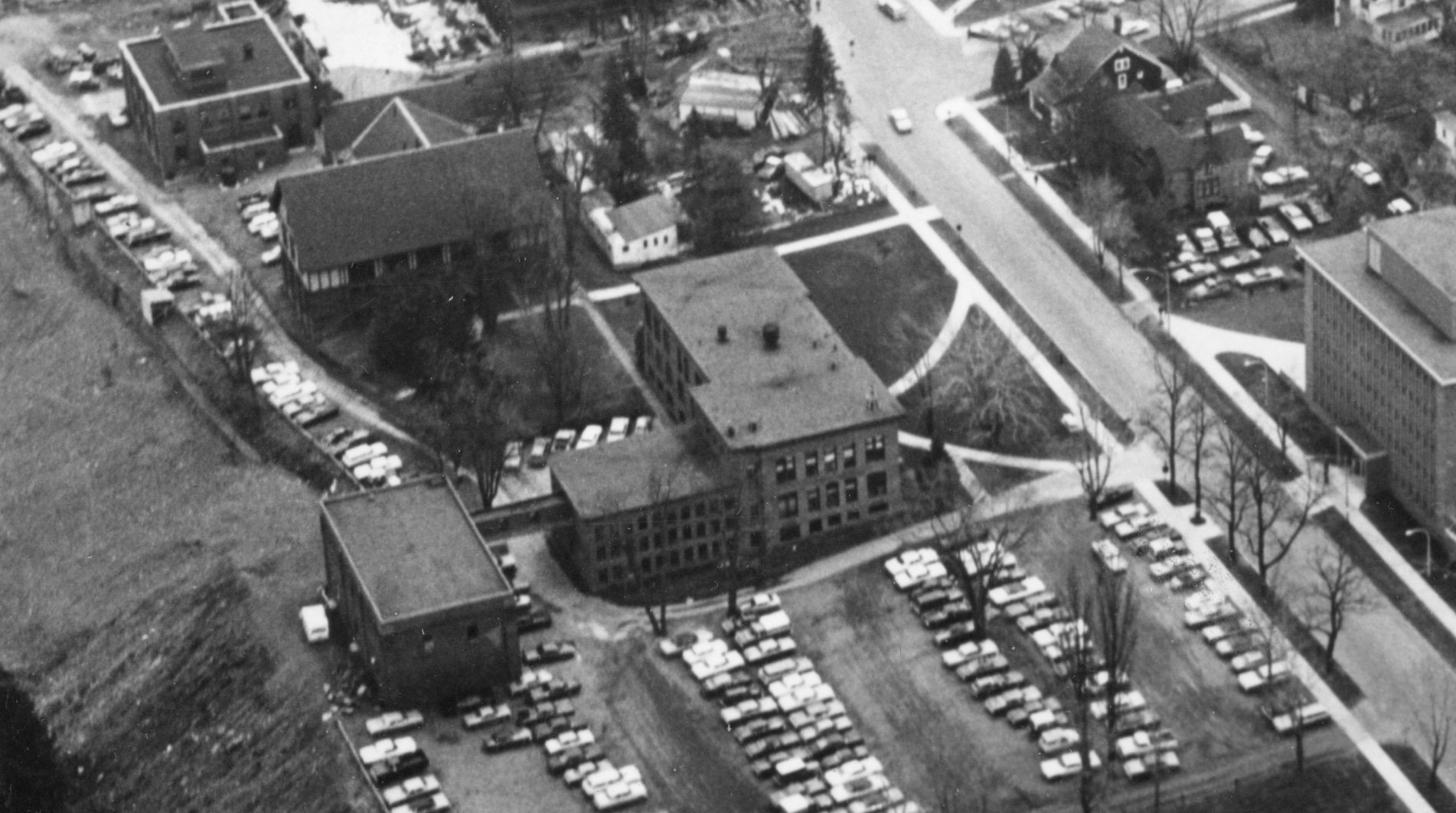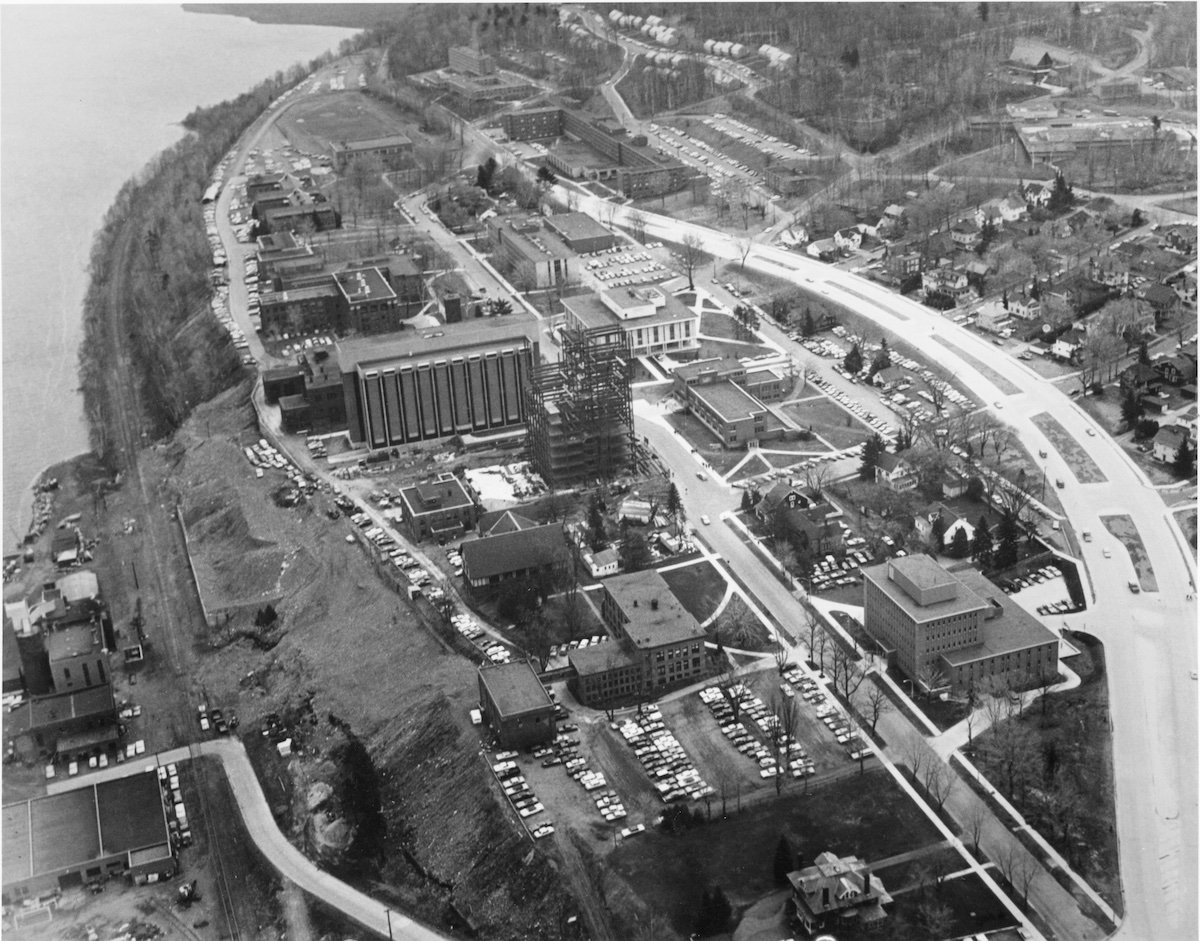Originally connected to the AOB by a second-floor bridge, the AOB Annex Building was built during the Depression for general storage and expanded library space. It was designed by Wilfrid Polkinghorne (MTU class of ’14), who originally worked as a draftsman and engineer for the Ahmeek Mining Co. and who joined the Michigan Tech faculty in 1921 and later became the first head of the independent civil engineering department in 1945. Although we know the Annex was built in 1936, it is unclear whether the building was funded through federal New Deal programs, state finaicing, general univeristy operating budgets, or through another source. In 1936–37, the University did receive a federal grant through the Works Progress Administration (WPA) for improving the library cataloging system, and this award may have prompted the library expansion and construction of the Annex, though the connection is unclear.
The interior, though originally entirely open plan on all three floors, shows a distinct hierarchy in detailing that demonstrates the relative importance of the floors: the basement has rough concrete walls and originally a dirt floor, the ground floor has simple brick walls, and the second floor has cream-glazed brick walls. The second floor seems to have been dedicated library stack space used mainly for government documents. The basement was used by ROTC as a rifle range until the 1980s and had the building’s only original restroom accessed by steep stairs between floors. The main floor was used by Facilities for general storage and, at one time, for housing a pipe shop and a paint shop for the University. After World War II, Army and Air Force ROTC occupied a now-subdivided first floor until they moved to the old Gymnasium/Clubhouse in the 1970s, while the first-floor western garage (now the archaeology lab) remained under control of Facilities until the whole first floor of the Annex was turned over to the archaeology program in 1977. The library vacated the second floor in 1966, when they moved into the new J. R. Van Pelt Library building. From 1971 to 2004, the second floor was leased to the Houghton County Public Health Lab and houses a water-quality testing lab for the Michigan Department of Health and other clients.
The signature bridge between the AOB and the Annex, presumed to have been built when the Annex was erected, was removed in 1985–86 (some stories erroneously say the early 1970s) as part of campus renovations. No single, definitive reason for this decision is known. During renovations to the building in the mid-2000s, no fewer than six reasons for the bridge’s removal were “remembered”: the clearance was too low for delivery trucks and fire/emergency equipment; it was no longer needed to connect the AOB to the library stacks, since the books had been moved to the new library building; the Health Department wanted to insulate itself from the AOB for security reasons; and/or it was structurally unsound. Clearly a research question for future campus architectural history.
Although the brickwork on both buildings where the bridge connected is a dead giveaway that it had been there, some people seem to have become skeptical that it ever existed. It is clearly visible in this photo from c1970 (we are checking on that date), when the MEEM was just being built and Cliff Drive only came from the east and stopped at the old Chemistry and M&M buildings.

Full Photo from c. 1970:

Original MTU Archives Photo MTU Neg 03157
